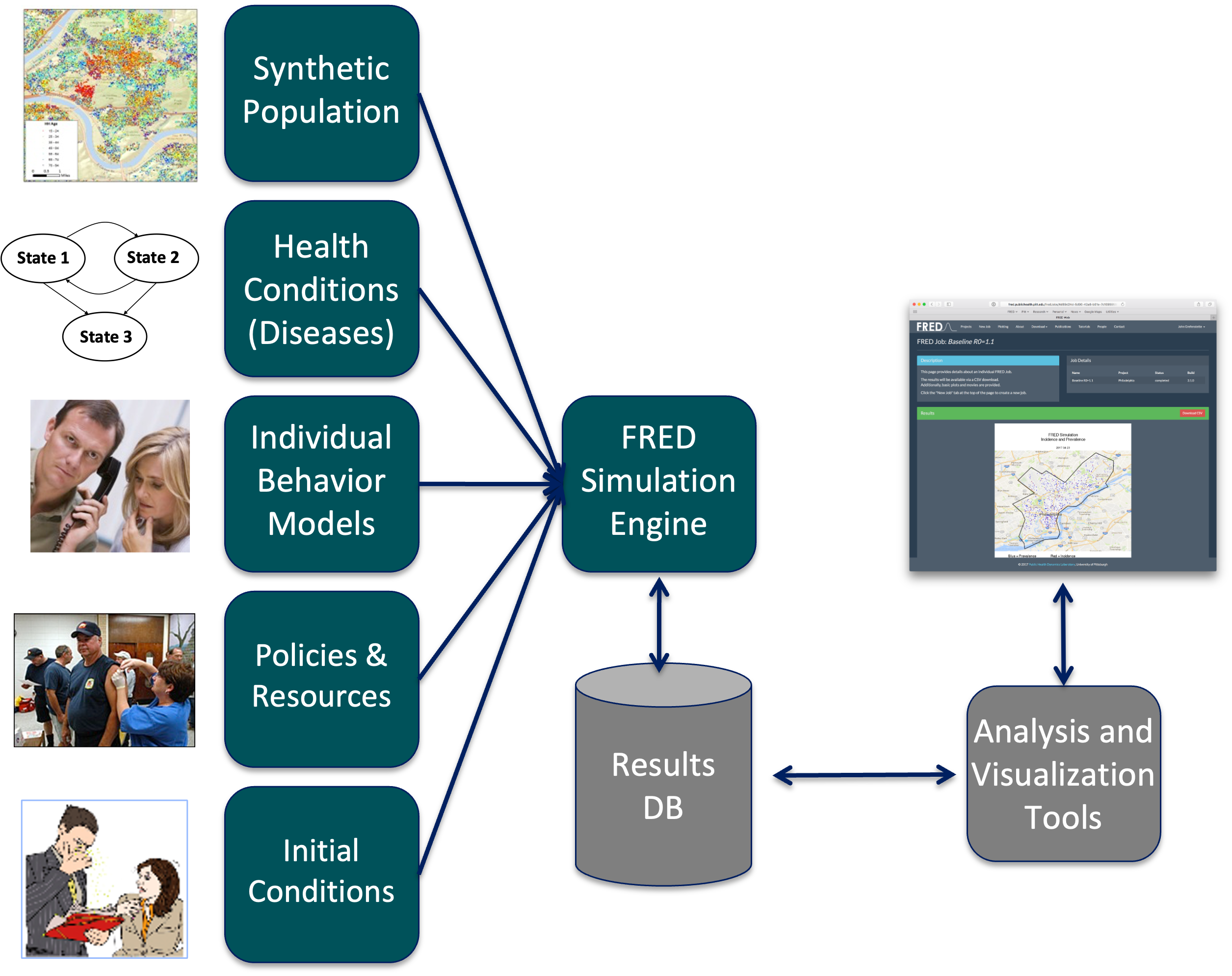Framework for Reconstructing Epidemiologic Dynamics (FRED)
FRED uses a census-derived synthetic population, generated from publicly available data on demographics, spatial locations
and school and workplaces by an iterative proportional fitting method. At the census block level, any table of demographic
factors (income by household size, age by gender, household size by household income, etc) are statistically equivalent to
the actual persons living in that census block. The inclusion of group quarters, such as prisons, college dormitories and
nursing homes, allows individuals in those groups in the population to be easily identified.
FRED enables definition of any disease that can be described as a series of clinical states with transitions between those states.
The state-transition diagram for the Opioid Use Disorder model is found here (refer to the diagram left to the Health Conditions label in the main diagram to the right).
As an agent-based model, each individual may exhibit certain behaviors that can be a function of the particular characteristics of the individual and the individual’s location. In infectious disease models, these behaviors might be staying home from work when ill, in the OUD model, they may take the form of seeking MOUD given specific characteristics of the individual.
Public health prevention and interventions can be defined in a very flexible manner that allows any component of
the current state of the model to be used in defining and implementing an intervention. Additionally, interventions can be defined
and applied over the course of a simulation or at specified times. For the OUD model, we are incorporating a series
of potential interventions, including the availability of Naloxone, Buprenorphine, Naltrexone and Methadone, as well
as a series of strategies such as linking OUD patients to care, interdiction of drugs, strengthening state Prescription
Drug Monitoring Programs, implementation of clinical guidance, and others.
In the OUD model, simulations are representative of a particular geographic location (typically a county). From multiple databases, we have data that can initialize the simulation with the type of drugs seized in a county, the amount of naloxone, buprenorphine, naltrexone and methadone available.
